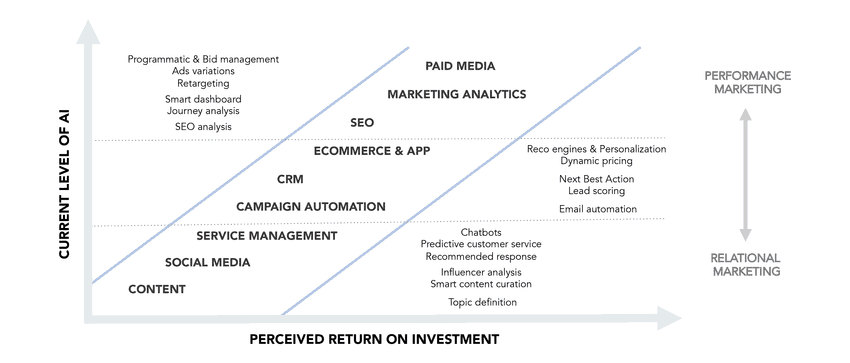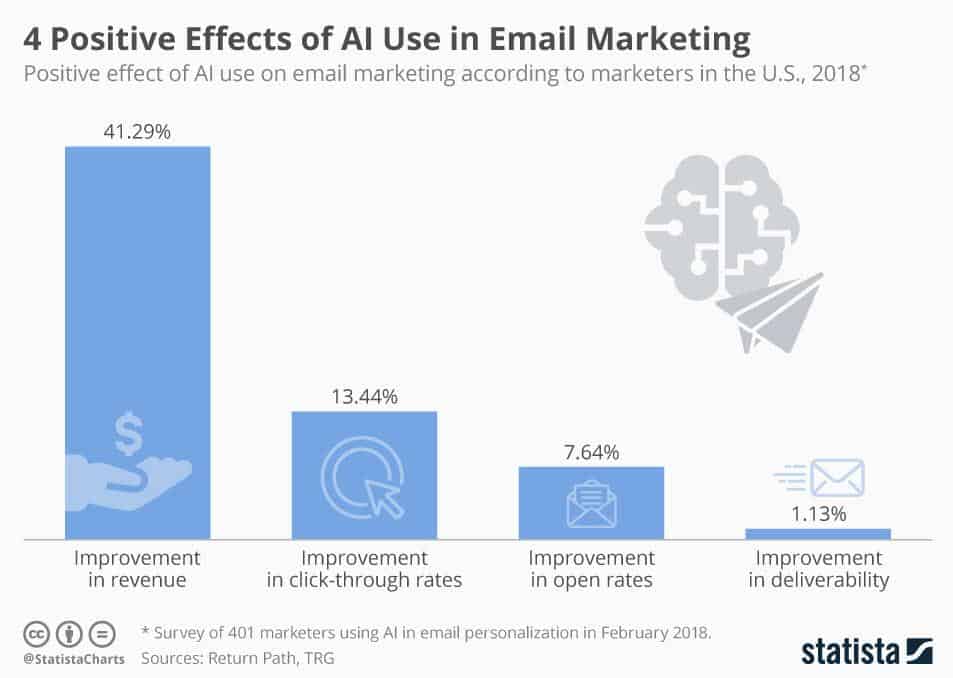Analytics and AI represent immense opportunities for marketing departments. Dozens of brands have tapped into these trends to curve aggressive marketing strategies. Heading into the next decade, analytics will ignite the next phase of growth for most organisations. AI on the other hand, will fast track better decisions and determine what your customers actually want. Most importantly tap into the benefits of data, analyse predictive trends and experience a better ROI. In this guide, we will let you identify trends in Analytics and AI that will help your company grow in 2020.
Introduction: Data Analytics, AI and Machine Learning
A. Data is the oil fuelling the AI fire
Data is the raw material for analytical marketing systems. Think of it as an equation that will help brands derive decisions and create actionable campaigns. Not too long ago businesses looked at data as an excess from the backend of processes and transactions.
Overtime, there has been a significant shift in this trend.
Organisations both big and small are now investing in data collection systems. Which is why we are quick to suggest, will be the key forecast for data driven growth.
We therefore believe the blueprint of a data driven future will take shape in the face of AI and Machine Learning tools.
Thousands of brands are already utilising this technology in relation to customer behaviour.
To create a target oriented but profitable marketing campaign, brands have to automate their marketing campaigns.
The concept of AI is not entirely fresh. What has dramatically changed is the appeal of cloud based solutions, AI -based marketmng domains and increased raw data.
Nonetheless, marketing professionals need to be aware of the relationship between data analytics, predictive analytics and machine learning.
Data Analytics
Data analytics involves raw data analysis to make market forecasts.
Predictive Analytics
Predictive analytics enables marketing departments to predict future outcomes using analytical models and historical data. Predictive analytics branches into five key concepts
- Machine Learning
- Forecasting
- Regression
- Text Analysis
- Classification
We are only going to talk about Machine Learning.
Machine Learning
Machine learning implements an AI algorithm which makes assumptions, tests different variables and learns autonomously.
On the other hand, AI is the intersection of multiple frameworks. The idea is to learn usually through model assumptions and re-evaluation of data. All of which takes place autonomously.
Beneath this behemoth of data, AI machine learning tests data repetitively to identify possible matches between customers and products. An action that takes place at speeds beyond any professional marketer.
B. Size of the market (What is the size of AI marketing)

(Source: Research gate)
- AI enables businesses to increase their market by 52%
- In 2019, Retailers invested at least $5.9 Billion in AI marketing and analytics.
- AI based marketing automation will increase by 155% across sales departments by 2021.
- At least 75% of organisations using AI have improved their customer satisfaction by 10%.
- The impact of AI on marketing will grow to approximately $40 billion by 2025.
C. Implications of Analytics and AI
Analytics and AI have are making it possible for marketers to conduct in-depth data analysis. A trend that has made marketing experts to not only become more technical, but also become data scientists. Therefore placing them at better position to utilise more insights from data campaigns, and also, make it possible to create actionable decisions much faster with the data findings.
The advent and advancement of AI is enabling product developers to design cutting edge products and solutions. Which, until recently, were only the preserve of high ticket marketing budgets. A situation that lowered risks associated with adoption of AI tools across marketing teams.
II. How to grow your audience without spending too much
A. Simplest combination of tools
Only the best combination of tools will achieve high marketing ROI for businesses. These tools must effectively blend with AI to shape programmatic advertising, personalisation and targeting. Finally, sale team will be able to apply data science insights to cut down budgets that would otherwise be spent on experts and technologies.
While their is a growing few of AI replacing most marketing professionals, eMarketer predicts that AI will generate at least 2.3 million jobs.
Market Analysis
AI analytics will help markets uncover insight about their market needs. The next phase of growth for most of these companies will be driven by predictive forecasts. Marketing strategies will be shaped by tracked anomalies which will be essential to creating marketing strategies. This will help marketers identify and overcome potential hurdles.
Content Creation
There is a a variety of AI solutions for content creators, however, marketers are likely to take advantage of these solutions to improve their work.
SEMrush, for instance, uses artificial intelligence to research and suggest topics. Such tools will help sales teams better understand their audience’s intent. Therefore enabling them to create actionable content.
Content Optimisation and Deployment
Marketers will use sophisticated AI algorithms to deploy content according to user preferences. Tools such as Netflix achieve massive streams because they suggest programs according to a user’s viewing habits.

(Source: Statista)
Additionally, copywriters and marketers alike will be able to achieve highly targeted email marketing. Given the existence of AI tools that can segment customer behaviour based on a user’s past searches , interests and browsing history. Companies like Amazon are already do this.
A. Know how to use tools (What tools)
Have the right set of tools that will not only do the job, but also achieve leading edge marketing. Marketers should also position themselves in a way that they can use such tools.
B. Marketer must have qualitative skills (What skills)
The world is past the age of art-minded marketing professionals. Qualitative skills have become more important than ever. In 2020, a very important skill will be a combination of both creativity and an analytical mind.
Brands will be able to achieve the following in 2020, once they implement solid market analytics and AI.
1. Customer Satisfaction
- 86% of customer experience experts believe AI will help personalise services and products to better meet customer needs by 2023.
2. Sales Boost
- 41% of sales teams admit AI marketing has helped them boost their sales.
- 13% of the sales teams also admitted a 7.6% increase in the click thru rates (CTR).
3. Business Growth
- 38.1% of businesses witnesses remarkable marketing ROI after optimising their marketing activities with analytics and AI.
4. Dynamic Pricing
- Businesses are implementing AI to monitor and determine shopping trends. Through this, they can easily derive competitive prices and also provide market prices based on external demographics.
III. Summaries
- Dozens of brands have tapped into market analytics and AI to curve aggressive data driven marketing strategies.
- Data has become the raw material for analytical marketing systems. Think of it as an equation that will help brands derive decisions and create actionable campaigns.
- Sales teams must be aware of the relationship between ML, predictive analytics and data analytics.
- Machine learning implements an AI algorithm which makes assumptions, tests different variables and learns autonomously.
- Only the best combination of tools will achieve high marketing ROI for businesses. These tools must effectively blend with AI to shaoe programmatic advertising, personalisation and targeting.
- At least 75% of organisations using AI have improved their customer satisfaction by 10%. The impact of AI on marketing will grow to approximately $40 billion by 2025.
- eMarketer predicts that AI will generate at least 2.3 million jobs.
- Brands will achieve, through market analytics and AI, customer satisfactions, sales boost, dynamic pricing and business growth.
Sources
https://www.owox.com/blog/articles/marketing-analytics-trends-2020/
https://svitla.com/blog/machine-learning-solutions-for-business
https://www.adverity.com/ai-marketing/
https://towardsdatascience.com/top-10-ai-trends-for-2020-d6294cfee2bd

